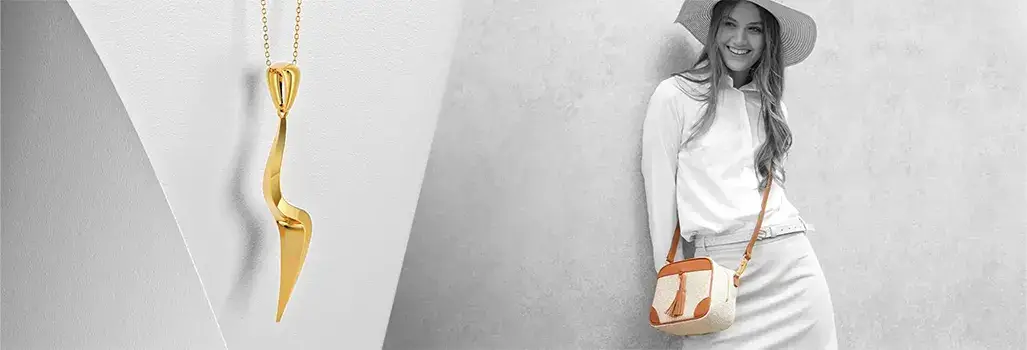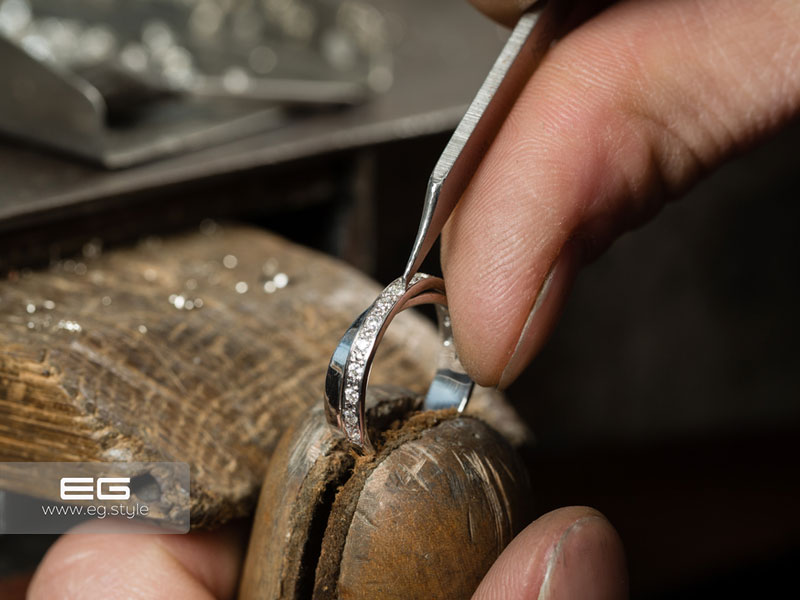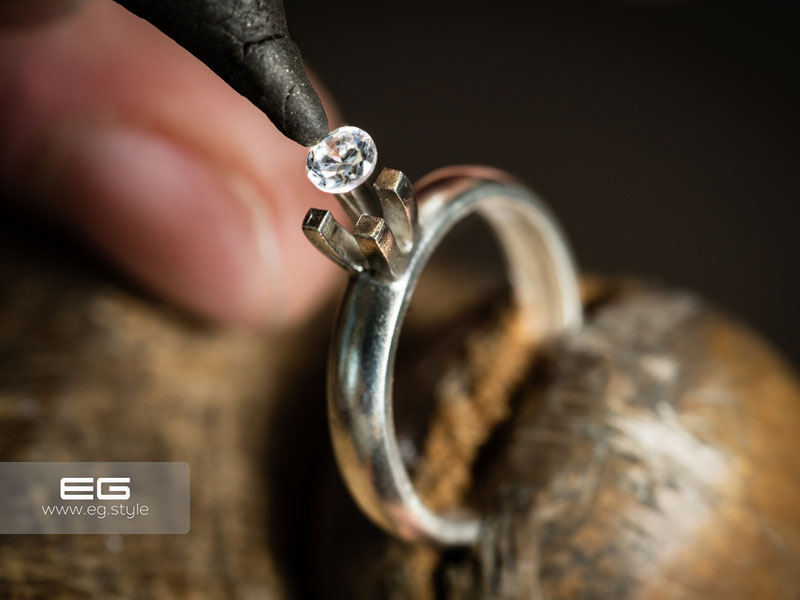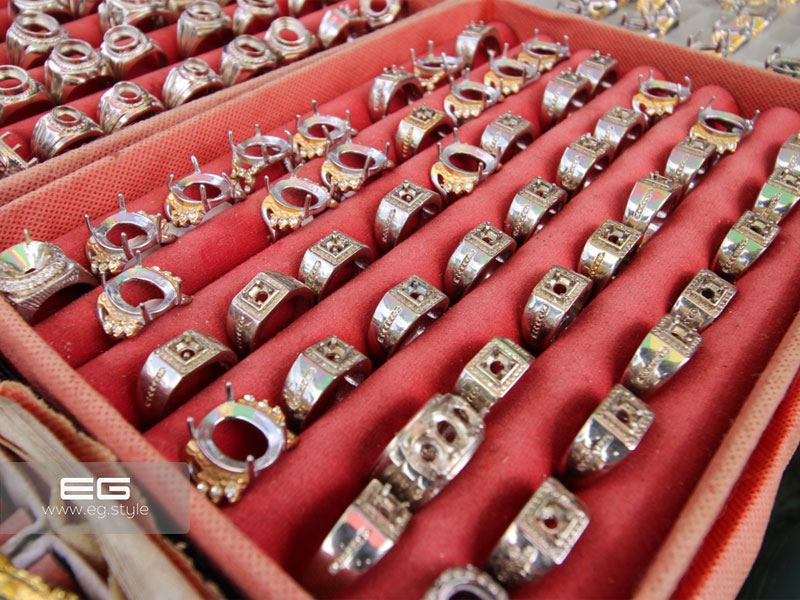In this article you will read:
Taking a glance at Jewelry store windows, you will notice eye-catching jewelry. Many of the pieces, however, owe their beauty to the precious stones which have been set on them masterfully. There are precious gems which are at times, even more precious than gold; a fact that should be taken into careful consideration. In this article, we will discuss stone-setting which is the art of placing precious gems.
What is Stonesetting?
Stone-setting is the last operation done on a piece of jewelry, without doing which the piece of gold doesn’t really look attractive. Jewelers and those working in jewelry workshops make the main base for the gem stone, and those who are experts in cutting precious gem stones, prepare the gem. Stone-setting is the level that should be done with complete mastery.
Diamond are used in producing jewelry more frequently than other gem stones. However diamonds are found in different colors in the nature; To get any more information on diamonds, we suggest you study our article on «Natural Diamonds + More than 5 Colors».
Stone-setting is actually the art of placing precious gem stones in place. Precious gem stones are only seen on pieces of jewelry these days while they were also seen on different dishes. Such dishes are, however, less frequently seen these days.
History of Stonesetting
Examples of in-laid works of art and stone-setting can be seen on stabs, kings’ crowns and even old dishes.
The art has been seen as a welcomed one, as a result of which, great arts such as gilding and etching have bloomed in Iran. However, upon the arrival of Islam to Iran, verses of holy Quran were written on dishes.
Stone-setting could make great progress during Saljoughi period, and top artists performed their art on pewter and bronze and made holes that were finally filled with silver and copper.
Gold Stonesetting
With regard to the fact that gold is a precious metal, we expect precious gemstones to be placed on it. The precious gemstone will be handed to a stone-setting expert.
Stone-setting is the only part of jewelry production that should be done by an expert to prevent damages to the stone. Stone-setting should be done at an utmost of care, delicacy and attention and place the stone on the desired base without using glue or other chemicals. This is because chemicals usually lose their adhesive property and the stone may get apart from the piece of jewelry. Imposing too much pressure, on the other hand, may result in breaking the gem.
Gem stonesetting
Setting different gem stones is not done in the same manner. In other words, each gem stone, is of a different size and should be set in a different way. Large gemstone are usually set in one of the below-mentioned methods
Wall-Like
Prong Stone-setting
Cornerstone
Small stones are placed with more delicacy and care . The methods are as follows:
Prong Stone-setting
Channel
Bead
Flush Stone-Setting
Claw Prong Method in Stonesetting
The name shows that through this method, a hook-like tool keeps the gem steel on the metal. The prongs will be placed on bases and the gems will stand on them. The method is used for both small and large gems. The main reason for using these bases is to present the gem more completely to attract more attention.
Channel Setting
It seems that opposite walls are placed on the base and the gems are placed on both of them. After the experts in stone-setting ensure the correct placement of the gems, the walls will press the gem and the gem will stand still in a rail-like track.
Bead setting
This is a method used for very small gems that weigh less than one carat. This is the hardest stone-setting method, and the experts should keep an eye on the gems to prevent possible damages.
Flush Stonesetting
I this method, the gems are placed on the base in a way that no one can notice how the gem is placed on the base, as if the gem were in a bowl.
The pieces of jewelry will look special through each of these methods. Another point that the stone setting experts must pay careful attention to the foundation beneath the gem. The bases are of different types.
Wall-like or Cave-like Bases
Channel Setting
Pave Setting
Bead Setting
Ballerina Setting
Cluster Setting
Balanced Setting
Wall Setting in Stonesetting
The name is quite saying that the walls in this type of stone-setting preserve the gem completely. This method is used in case of gems with fantastic cuts. This way, a wall surrounds the gem completely. Wall-like bases surround the gem completely and there will be no possibility of falling.
Channel Setting
As already mentioned, stone-setting is the last step in manufacturing pieces of jewelry. As a result the cut gem will be placed on a base that has been already made in the jewelry workshop. On the other hand, gems and precious stones have different types of cuts, each of which has its on effect on the beauty of a gemstone.
Channel setting is used in case the gems with a round cut; a type of cut that contributes to saving the gem. These bases help support the edges of the gem, so that they will not abrade.
Pave Setting
It is hard to work with Pave setting, and needs great expertise. It is just like paving a piece of land with mosaic. Pave setting is usually suitable for very small gems. The expert should place the stones with complete care and attention, while taking the geometry of the gems into account. This type of stone-setting is hard and needs enough attention, which also affects the final price of the piece of gold.
Bead Setting
When the executor uses beads setting, the gems should be placed one after another on the base. In this way, the gems look larger and different models will be made with creativity in base and stone size. This is when the gem shines the best.
Ballerina Setting
These bases look like a ballerina’s skirt. In this method of stone-setting, the stones will be arranged in cone-like manner and the final design will look like a ballerina’s skirt. The design, however, is among the classic ones.
Clustered Setting
The stones usually form flower-like or other similar visual designs on clustered bases. When clustered bases are used, the stones should be placed at different heights, regardless of their cut.
Balanced Setting
As the name of the base indicates, the base and the gem should be in the same level, and the gem should be placed in a way that doesn’t exceed the base. In other words, both the gem and the base are at the same level, and as a result, not much of the ring’s bright shine can be seen.
Stone-Setting Conclusion
In this article, we discussed the art of stone-setting, which has its roots in the old past, and we also introduced different types of stone-setting. Different types of stone-setting are as follows:
Prong Stone-setting
Channel
Bead
Flush Stone-Setting
Next, we discussed different types of bases that hold the gems which are as follows:
Wall-like or Cave-like Bases
Channel Setting
Pave Setting
Bead Setting
Ballerina Setting
Cluster Setting
Balanced Setting
If you plan to see stone-setting on attractive pieces of jewelry, we suggest you visit EG products.









